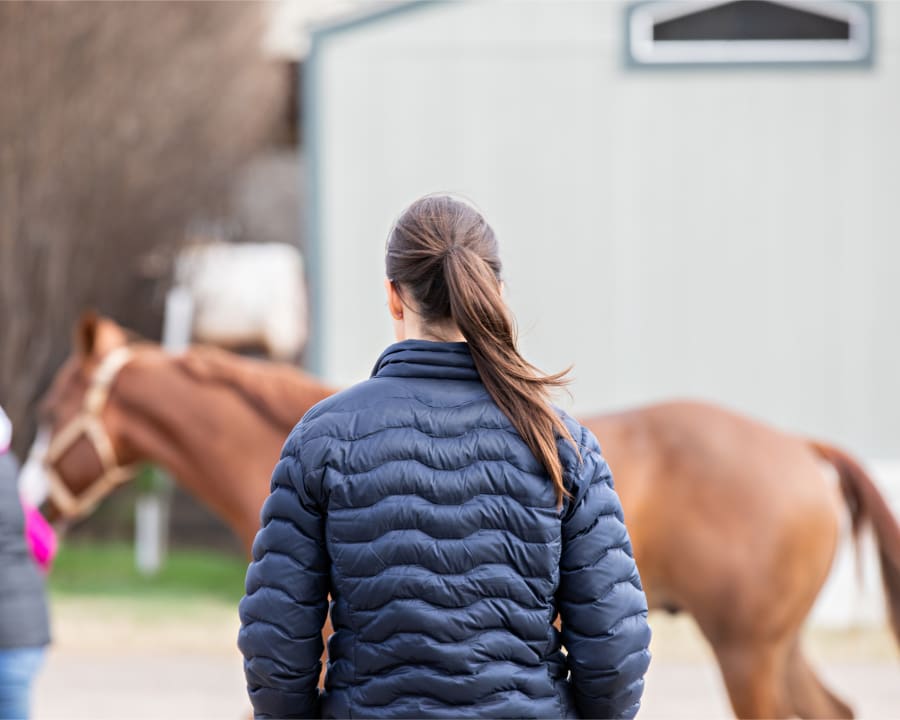Lameness Exams for Horses
Lameness can be quite simply described as any alteration in the horse’s gait.
The lameness exam will begin by gathering your horse’s medical and farriery history and work/exercise routine through a series of questions, conversations, and previous medical records. Please have any previous medical records and diagnostic history available.
Our vets at Sound Equine Veterinary Hospital will conduct a visual appraisal of your horse at rest and then evaluate conformation, balance, and weight-bearing, and look for any signs of injury or stress.

What is involved in a lameness evaluation?
A complete hands-on examination will be conducted in search of pain, heat, or swelling of muscles, joints, bones, and tendons.
Our vets will evaluate the movement of the horse at a walk, trot and canter for several signs including head bobbing, switching leads, stiffness, shortening of the stride, and poor performance.
Joint flexion tests may illuminate any subtle signs of pain and irregular movement.
Blocking may also be performed. This is a procedure used to help localize the source of pain when it is not readily apparent.
What Environment Is Needed For Lameness Evaluations?
The ideal conditions for lameness evaluations change depending on your horse. For performance horses, we may need a flat, hard surface. An arena is preferred and we may need you to ride your horse so we can evaluate them under saddle, so please have your boots and helmet ready. For older, geriatric horses or those with severe conditions, we may be able to perform a much more simple evaluation such as watching them walk.
Further diagnostics may be required including blocking joints and nerves with a local anesthetic to pinpoint the origin of the lameness. Once isolated, imaging with X-rays and ultrasound can help determine the actual problem causing the lameness. This knowledge allows us to design a specific recovery plan for each horse.

